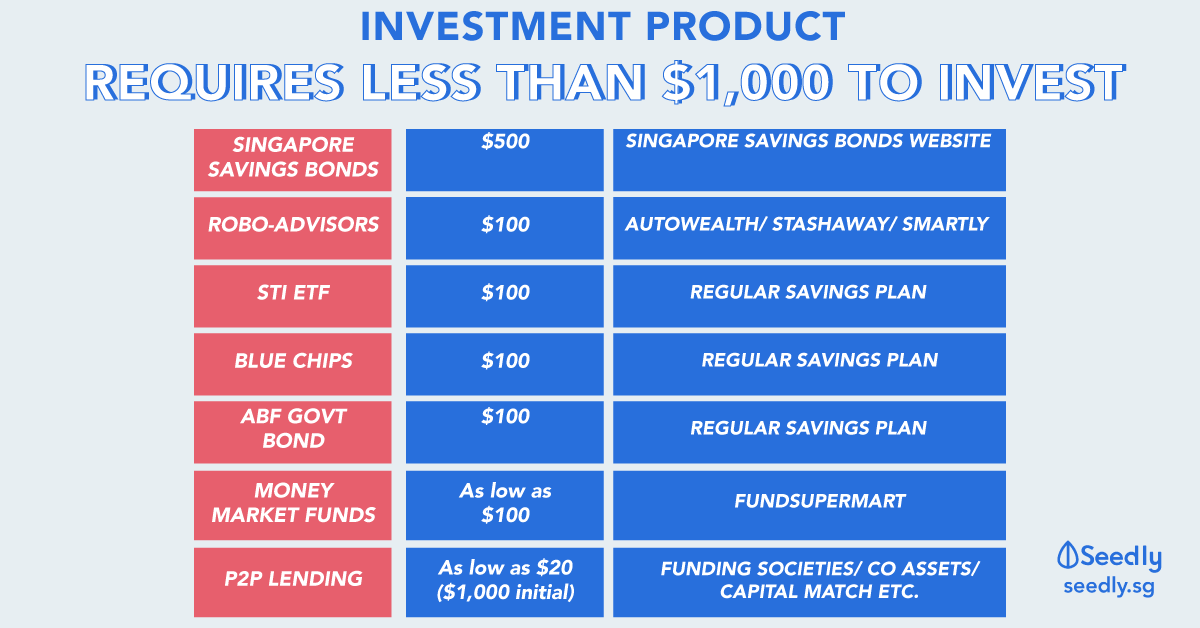Advertisement
Anonymous
Hi I'm a young working adult and i'm investing $300/month in POSB STI ETF, and also thinking about investing $300/month in Robo-Advisors. ?
How will I know when it's a "good" time to take out my money in order to gain a good profit from these sources?
Also, how do I get started on buying REITS or individual stocks? Via CDP or broker?
4
Discussion (4)
Learn how to style your text
Victor Lye
29 Aug 2019
Founder & CEO at SquirrelSave
Reply
Save
Hi I feel that it depends on your goals/objectives for investing. If its for your next big purchase/milestone such as buying a new house or a car, then I would say aim for a 5 to 10% profit after DCA. From the POSB website under investments tab you can see the averaged cost for all your ETFs.
However if its for a longer term goal such as retirement, you can consider to keep it longer because the ETFs usually pays out dividends which is like the 'interest' and its definitely higher than your bank interests. Thus no point selling and keep the cash in your banks that earns less unless you have a better opportunity cost.
Reply
Save
Hariz Arthur Maloy
22 Jun 2019
Independent Financial Advisor at Promiseland Independent
I suggest to skip the STI ETF and go straight for a global portfolio.
And if you're investing for th...
Read 2 other comments with a Seedly account
You will also enjoy exclusive benefits and get access to members only features.
Sign up or login with an email here
Write your thoughts
Related Articles
Related Posts
Related Posts
Advertisement









As you are young, you have a longer investment runway than most. And it is good you started early. However, I note you invest $300 regularly in the STI Index. Presuming there is no need for you to be only invested in Singapore, you should understand that the STI tracks the movement of the component Singapore stocks. Unless you believe that the component STI stocks are going to be going up all the time, you should consider diversifying your portfolio globally. Data shows that somewhere in the world, an asset class will do better - relatively - than the rest in terms of the returns for the risk taken. So your portfolio will be in a better position if you diversify it across global asset classes than to confine it to just the STI.
Your idea to invest in a Robo is an improvement as most Robos invest globally. However, I created SquirrelSave not only to diversify globally but to offer real-time tracking and management of your portfolio versus your specific risk requirements. A human will find it very hard to do this for hundreds and thousands of investors with different investment amounts. So SquirrelSave uses machine learning AI to do this, working 24/7 just for each investor - whatever the investment amount. Also, check the underlying investment assets. I recommend using ETFs as these are low cost and offer real-time prices compared to unit trusts. SquirrelSave only uses ETFs which are diversified and represent global asset classes - e.g., USA, Japan, China, Brazil, gold, etc. These ETFs are screened and adopted by our system which has been data trained with machine learning techniques.
As for your question as to when to take your money out, there is no "good" time. You have to start clearly by deciding your own risk profile. If you feel nervous, then it is likely you have taken on more risk than you should. Remember that in investing, any loss that you stare at is an "unrealised" loss until you decide to take it out - in which case, it becomes a "realised" loss. It is common to see "buy high, sell low" situations. Apart from your risk profile, you should decide on a clear time horizon. You can review your investment performance once the time horizon is reached. Investing requires risk setting and time horizon with recommended diversification. Else, the behaviour is more trading than investing. In my view, trading will be more like betting on horses.
To start trading REITs or stocks - which is like betting on horses, you will need to sign up with a licensed stockbroker. Check for the commission charges and look out for any minimum commissions applicable. The CDP is merely an electronic registry that records your ownership of stocks. But you should check that your CDP is operational. Simply go the SGX website to look for the CDP online login.
All the best!